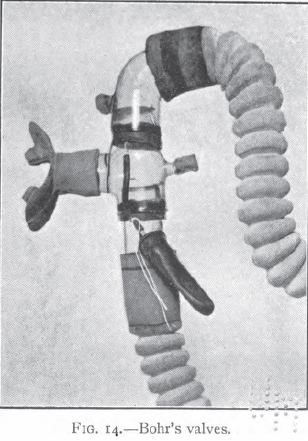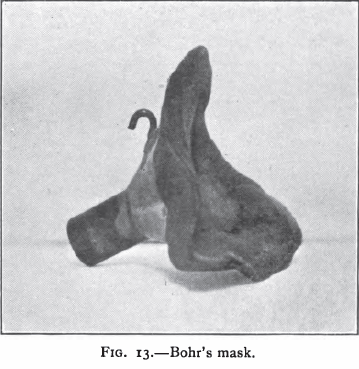
From: The respiratory exchange of animals and man by August Krogh, 1916, page 40.
“Valves such as Muller’s and other fluid valves, generally filled with water or mercury, were formerly used extensively. They have the advantage that leakage backwards is impossible, but their resistance is generally considerable. Zentz uses the “Darmventile” invented by Speck. These are certainly effective and the resistance very slight, but the valves are large and cumbrous. Reliable metal valves with a minimum resistance have been constructed by Chauveau (Tissot, 1904) and by the firm Siebe, Gorman (Douglas, 1911). Bohr constructed rubber valves which, slightly modified, have given entire satisfaction in Danish laboratories (fig. 14).”

From: The respiratory exchange of animals and man by August Krogh, 1916, page 40.
“Masks of rubber which can be fitted on the face and enclose the mouth and nose are far more convenient than mouthpieces, but it is extremely difficult to avoid leakage. Bohr constructed masks which were specially fitted to each person on whom it was intended to experiment. These masks (fig. 13) consist of a funnel-shaped piece of tinplate coated on the edge with a substance used by dentists and know commercially as Stent’s composition. This substance becomes soft at a temperature of about 50 degrees, and can then easily be moulded on the face of a person and can be made to fit absolutely airtight when greased with lanolin, causing at the same time a minimum of inconvenience. These masks are much used in Danish laboratories for all experiments which have to last more than a few minutes at a time.”
The diverse, quirky and mostly forgotten history of Pulmonary Function testing

